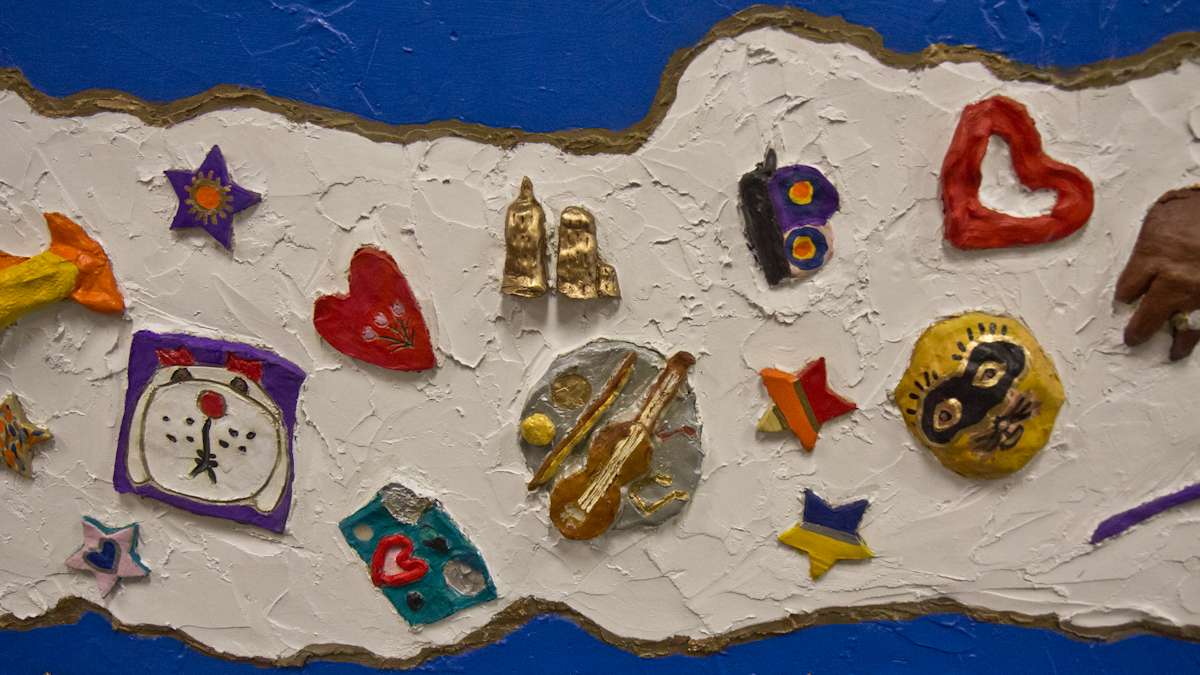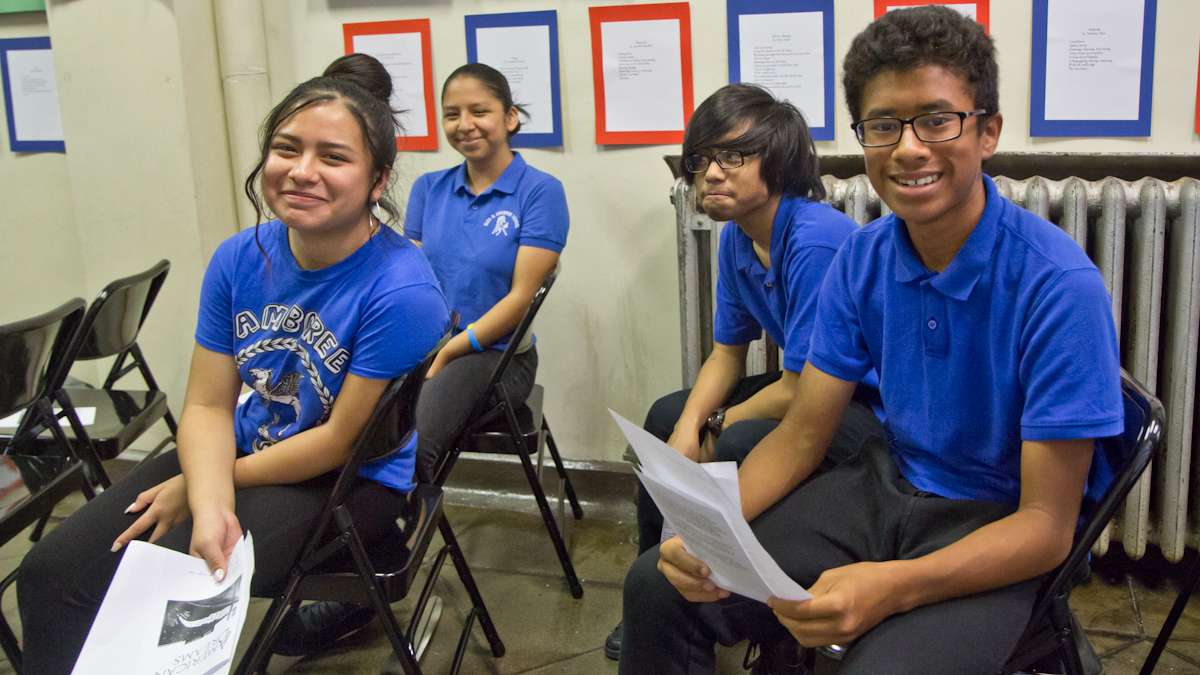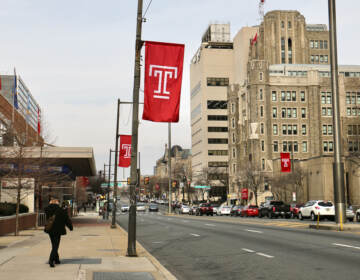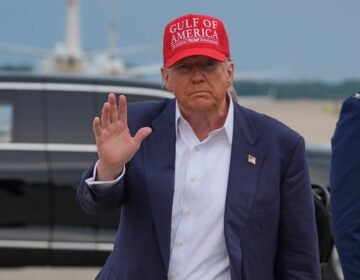Interpretations of American dream take form at South Philly school
ListenMargie Castejon immigrated to the U.S. three years ago from San Pedro Sula, an industrial town in Honduras once labeled the most dangerous city in the world for its epidemic of gang violence.
“Once I came here, when I was breathing, I was breathing free air,” Margie said. “Like, it was a different air. Sometimes, I’m speechless about it.”
Anyone who has taken a history class or heard a political stump speech recognizes this version of America, the America that shelters those fleeing persecution and seeking opportunity.
But is America still a sanctuary? And, if not, what does it stand for?
There may be no more appropriate group to ask than students at Eliza B. Kirkbride School, a K-8 school in South Philadelphia. Four in 10 Kirkbride students are English-language learners, and many more are children of immigrants from East Asia or Latin America.
Over the past year, the school’s eighth-graders have mulled an enduringly complicated question: What is the American dream? With the help of artists from the nonprofit COSACOSA art at large, Inc. and funding from Public Citizens for Children and Youth, the City of Philadelphia, the National Endowment for the Arts and others, the eighth-graders produced poetry, essays, and visual pieces inspired by their interpretation of the American dream.
Some answers encompassed global values.
“My American dream is for everyone to be treated equally,” said Don Vu, whose parents immigrated from Vietnam. “No one should be treated inferior to another individual.”
Other answers focused on personal aspiration.
“My American dream is to be a pediatric surgeon,” said Emily Duong, also the child of Vietnamese immigrants. “It’s my dream job.”
Those dreams are now preserved forever on a three-dimensional, ceramic mural that stretches across the building’s third floor. Students contributed small, glazed sculptures to represent their American dreams — everything from peace signs to slices of pizza.
Students also recorded a podcast filled with poetry inspired by the project.
Jessica Gordillo recited a piece called “Migrants.”
Qui Thach titled his poem “The Free Land.”
“In case you forgot, the United States is supposed to be a free land, meaning you can do anything, be anything, so what part don’t you understand,” Qui’s poem began.
‘Try to cut out the noise’
Not surprisingly, politics was never far from the fore. Mayor Jim Kenney appeared at a Thursday unveiling of the American dream mural and delivered an impassioned, impromptu speech on the continent’s immigration history, stretching back to Christopher Columbus’ 1492 voyage to the Caribbean.
At one point, Kenney repeated his promise to keep Philadelphia a “sanctuary city,” pausing for a moment to let tears pass.
“Try to cut out the noise,” he told the eighth-graders. “Try to cut out the ugliness. And remember that, in this city, you are respected. You are wanted. And we love you.”
Margie acknowledged the tense political conversation around immigration, and worries President Donald Trump doesn’t value the country’s cultural diversity.
“If I was president of this country, I’d be really happy to be president of the country, which is really diverse,” she said.
On the balance, though, Margie’s vision of America was unshakably positive. She raved about her school and her classmates.
“Trust me, in my life, I never tried Asian food. I came here, and my friend Philip gave me dumplings,” she said. “And I’m like, ‘Oooo this is so good! Like how come I didn’t try this before?”
Margie even praised the country’s politicians, saying in Honduras it’s difficult to reach elected officials.
As part of the American Dreams project, students visited City Hall and met with Councilman Mark Squilla.
“That’s the difference between being a country where your voice [doesn’t count] and a country where the government really cares about you, even though you’re not from here,” Margie said.
When the American Dream project began last year, students analyzed two pieces. The first, “America the Beautiful,” spoke to the nation’s ideals. The second, “Let America Be America Again” by Langston Hughes, examined the gap between those ideals and reality.
The final projects reflected glimmers of both — boundless optimism along with frustration and disillusion. Perhaps you’d expect pessimism to dominate in an era where mistrust of government and other institutions seems epidemic. But Margie Castejon, and many of her classmates, still believe.
“My American dream is to graduate from college and be the first one from my family to graduate from an American college,” she said. “And I think that I’ll achieve that.”
WHYY is your source for fact-based, in-depth journalism and information. As a nonprofit organization, we rely on financial support from readers like you. Please give today.
















